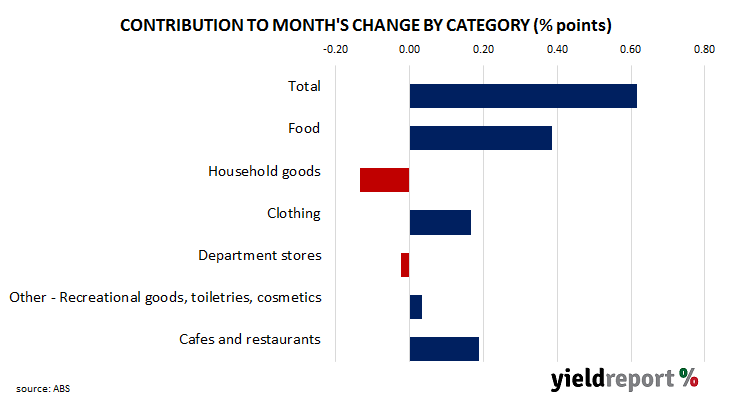Summary: Retail sales up 0.6% in September, slightly greater than expected; recent monthly gains likely due to higher prices; detail suggests rate-rise effect coming through; largest influence on month from household goods sales.
Growth figures of domestic retail sales spent most of the 2010s at levels below the post-1992 average. While economic conditions had been generally favourable, wage growth and inflation rates were low. Expenditures on goods then jumped in the early stages of 2020 as government restrictions severely altered households’ spending habits. Households mostly reverted to their usual patterns as restrictions eased in the latter part of 2020 and throughout 2021, although not for all categories.
According to the latest ABS figures, total retail sales increased by 0.6% in September on a seasonally adjusted basis. The rise was slightly greater than the 0.5% increase which had been generally expected but in line with August’s result. On an annual basis, retail sales increased by 17.9%, down from August’s comparable figure of 19.2%.
“Note that the headline here is nominal sales, which includes changes due to price variations,” said Westpac senior economist Matthew Hassan. “Indeed, almost all of the recent monthly gains are likely due to higher prices rather than volumes.”
Commonwealth Government bond yields moved modestly higher on the day. By the close of business, the 3-year ACGB yield had crept up 1bps to 3.34% while 10-year and 20-year yields both finished 2bps higher at 3.77% and 4.10% respectively.
In the cash futures market, expectations regarding future rate rises firmed a touch on average. At the end of the day, contracts implied the cash rate would rise from the current rate of 2.31% to average 2.845% in November and then increase to an average of 3.05% in November. May 2023 contracts implied a 3.82% average cash rate while August 2023 contracts implied 3.945%.
“While price effects are difficult to disentangle, the detail does suggest there may be a rate rise effect coming through over and above the direct ‘eroding’ effect of higher prices,” added Hassan.
Retail sales are typically segmented into six categories (see below), with the “food” segment accounting for nearly 40% of total sales. This segment was the largest influence on the total during the month as sales increased by 1.0% on average over the month and thus contributed 0.39 percentage points of the 0.62% increase.



